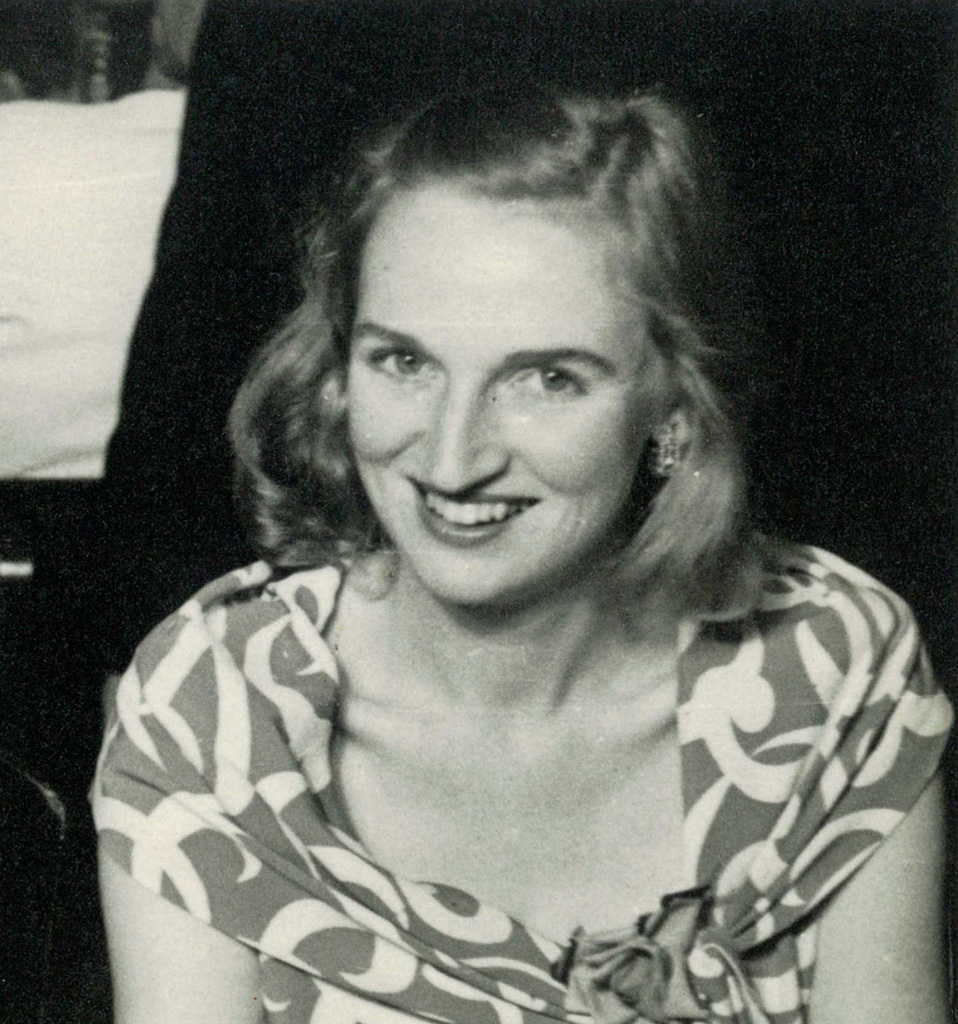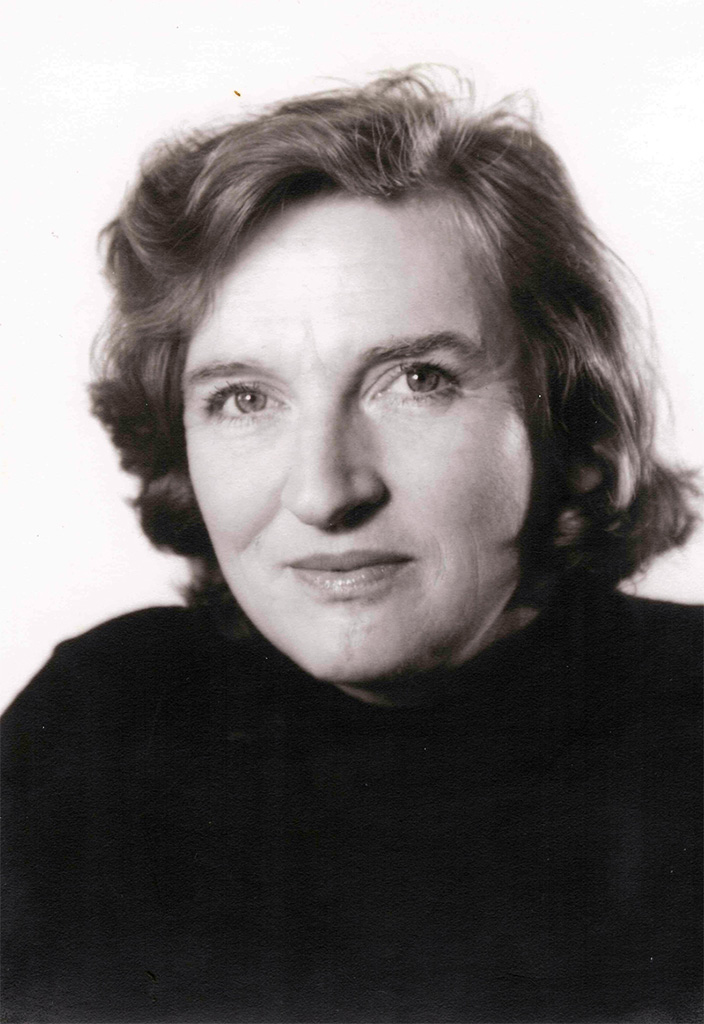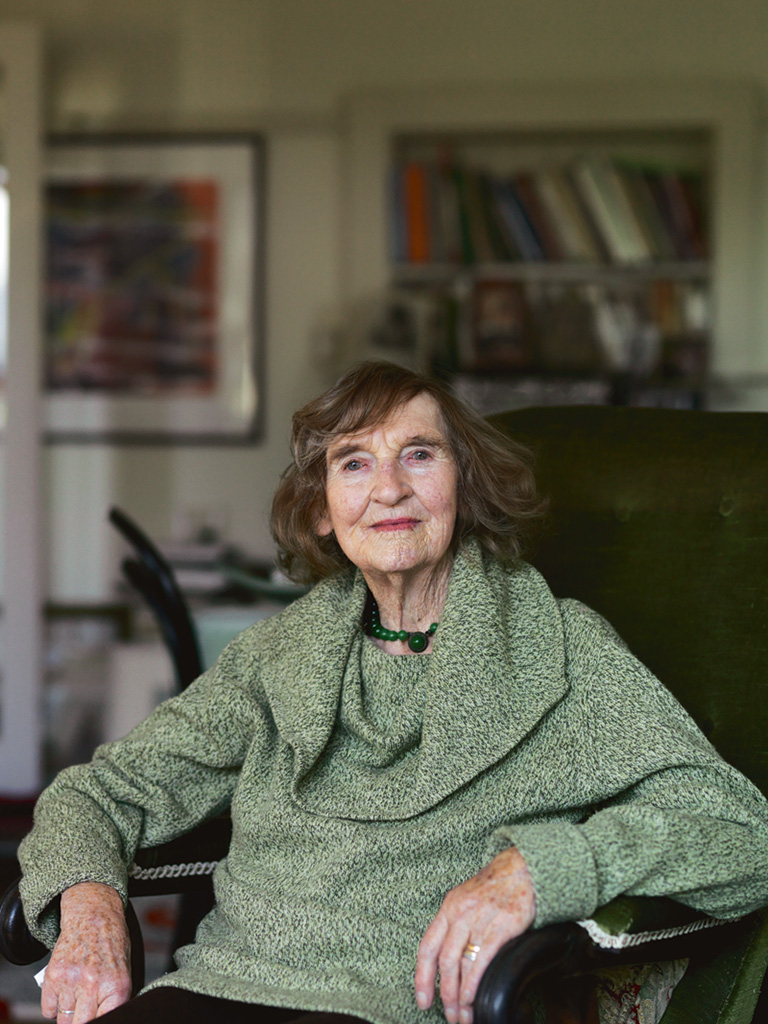Life and times
Childhood
Avis Higgs was born in New Zealand in Wellington, on 21 September 1918. She had joint Australian / New Zealand parentage and came from an artistic family on her father’s side that included architects, designers and artists.
Her father, Sydney Hamlet Higgs was a prolific and accomplished amateur watercolour painter and a patent attorney by profession. Her great-grandfather was 19th century Tasmanian architect and landscape painter Joshua Higgs.
Her mother, Winifred (née Paterson) worked as one of Wellington’s first bank tellers.
Avis grew up by the sea at the family home in Karaka Bay, Wellington with her younger sister, Marie.
Education
Avis Higgs was educated at St Anthony’s School in Seatoun, Seatoun School and Wellington East Girls’ College. She then trained as a commercial artist at Wellington Technical College.
Career
Wellington 1938 - 1941
At 19, Avis left art school to begin a design career in Wellington, starting as a poster designer for grocery shops at commercial art studio National Distributors Ltd.
In 1939, when the Second World War broke out, Avis retrained as a nurse to help the war effort but while working at Wellington Hospital in 1941 she contracted diphtheria from a patient.
Sydney 1941 - 1948
Later in 1941, Avis was invited to Sydney to convalesce with her mother’s twin sister.
While recovering, Avis was inspired by a magazine article on fabric designing for printing and she started to make her own patterns with a new aim of making textile design her career.
Avis set out to look for a job in wartime Sydney, armed with addresses of local textile manufacturers gleaned from the telephone book. She presented her portfolio of fabric designs, watercolour sketches and drawings to Silk & Textile Printers Ltd (STP), a screen printing factory for dress fabrics. Although no vacancy at the time, a new position was created and she was hired. Avis was on her way.
With Italian immigrant and director of STP, Claudio Alcorso, interned during the war and the other male designers away fighting, Avis was given free rein and appointed Head Designer at STP from 1942 to 1945.
In 1946, Avis left STP when the owners returned from war internment to take over management of the factory. Avis found herself side-lined in the new post-war environment like other women all over the world, having entered industry during wartime only to lose their positions when the boys returned home.
From 1946 to 1947, Avis worked as chief fabric designer with Edward Malone, a former STP industrial chemist, who set up his own textile printing works – Colorset Printed Fabrics Ltd – in the Blue Mountains north-west of Sydney. However, the company was short staffed and Avis was not able to work satisfactorily on her designs, and she preferred to live in Sydney where she thought the action was.
Wellington 1948 - 1950
Avis decided to return to Wellington but there were no fabric printing manufacturers there and the New Zealand market for locally produced designer textiles in the 1940s was extremely small. Avis realised the best way of getting her textiles onto the market in Australia and New Zealand was through a European based manufacturer who would consider her works as ideas to export back to Australasia and who would give her access to wide scale production.
She returned to advertising art, designing cinema advertisements for Screens Advertising Ltd in order to save money for a boat passage to England. During her evenings, Avis worked on creating a portfolio, developing a collection of New Zealand designs including some based on native plants and Maori patterns intended for the Australasian market.
While in Wellington, Avis also tried her hand at designing and printing a range of unique hand-printed silk scarves, selling them at the newly-opened Gallery of Helen Hitchings on Bond Street, the city’s first dealer gallery.
London 1951
With her portfolio bulging with new ideas, Avis Higgs set sail to the UK – a world centre of textile design.
Initially, Avis found work as a freelancer in a tough sales environment that tested her courage and determination as an artist. Finally, she found positions, first in Manchester at W.E Currie & Co., and then in London as an agent to French designer F. Williams Gobeaux, for whom she acted as a consultant on the taste of New Zealand and Australian women and what type of designs should be sent to the Antipodes.
However, all too soon, Avis’ textile design career was abruptly terminated by a car accident on a trip to Italy. Her friend, who was driving, was killed and Avis was injured with a fractured skull and a badly smashed leg that saw her recuperating for many months in a Rome hospital.
Wellington 1952 - present day
On her return to Wellington in 1952, Avis Higgs wanted to change direction, putting textile designing aside and spend the rest of her life pursuing a successful career in painting.
Each year, she was involved in organising works for art exhibitions, either sole, or in association with groups of artists. She was actively involved in the Architectural Centre Gallery, the New Zealand Academy of Fine Arts and the Watercolour Society of New Zealand which she helped to set up. She also taught painting classes at the Workers Educational Association (WEA) among others.
Avis’ textile design achievements were largely forgotten until 1999, when design historian Douglas Lloyd Jenkins stumbled across her early work. Avis Higgs: Joie de Vivre – his book celebrating the contribution Avis Higgs has made to New Zealand design – was produced plus a travelling exhibition of Avis’ textile design work.
The exhibition and book caused a flurry of interest in her work – Christchurch-based Dilana Rugs chose six of Avis’ designs for an exclusive range of 100% New Zealand wool rugs that featured the work of leading New Zealand artists.
Wellington fashion designer Laurie Foon of Starfish reproduced a limited edition of Avis’ ‘Duckpond’ design (inspired by a visit to Wellington Zoo, and renamed ‘Black Swan’ by Starfish) for her 2005/06 summer collection.
Until 2012 Avis continued to be involved in the New Zealand art scene both as an artist and promoter of modernism in art and design.
Marriage and family
In 1952, there was a silver lining to Avis Higgs unexpectedly sailing home from England to New Zealand to recover from her car accident. On board the ship, she met her future husband Douglas Jocelyn (Jock) Beere, a young architect returning from a period of work in Britain. The two married in 1955, making their home in the large house with a view of the sea that in 1914 Jock’s father had built at the bottom of Tinakori Hill in Wellington. In 1958 Avis gave birth to their only child, Marguerite Beere.







